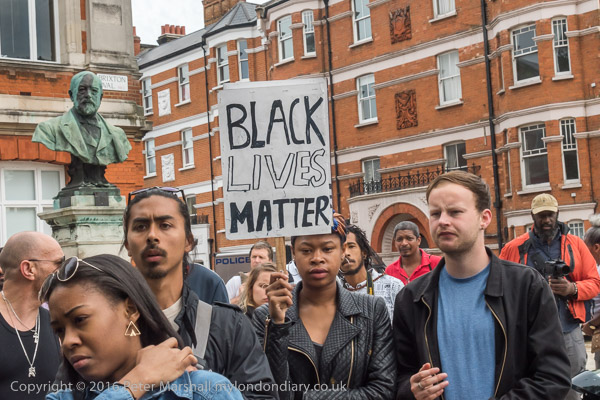
Sir Henry Tate, looking down on a part of the crowd in Windrush Square, Brixton was a sugar manufacturer who made a fortune out of refining and selling cane sugar here in the UK. Although his business had no connection with the slave trade, which had ended in the British colonies around 1840, a few years after the 1833 Slavery Abolition Act and Tate only began in the sugar business in 1859, his was clearly a colonial business, making its profits from the sugar grown by freed slaves and their descendants in the colonies, notably Barbados.
Tate was a great philanthropist, giving generously to colleges and hospitals and endowing south London with four free libraries, at Streatham, Balham, South Lambeth, and Brixton and treated his own employees well, building a dance hall and bar for them opposite the Silvertown factory. And of course in 1897 he gave his art collection to the nation, paying most of the cost for a gallery to house on Millbank – which has officially borne his name since 1932.
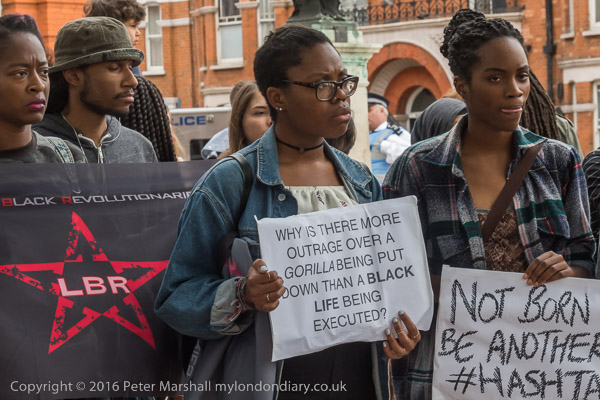
Although the sugar he made the profits on came from workers in the Empire, I’m not aware that any of Tate’s philanthropy extended to them, but he did provide the library outside which the protest I was photographing took place, and the gardens, now known as Windrush Square in which we were standing were given to the public by Tate’s wife after his death, in keeping with his wishes.
Many of those who came from the Caribbean to Britain in the post-war period, starting with those on board the Empire Windrush in 1948, found work in and around Brixton after the first arrivals were housed temporarily in the no longer needed deep shelter on Clapham Common. And for some, that Tate Library was their university and the gardens outside a popular meeting place. It was renamed Windrush Square as a part of the 50th anniversary of the arrival of the ship, but a few years later was the subject of a savage makeover by Lambeth Council (whose offices are opposite) designed largely with the objective of making it an unpleasant and windswept place to discourage any gatherings there.
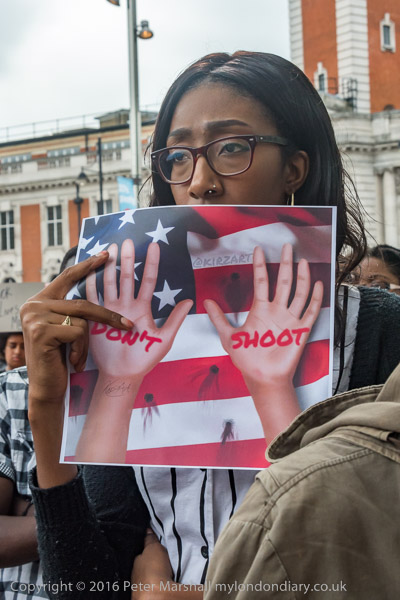
Despite this it remains a centre for the community, and several hundred gathered there for a rally and march in Memory of Alton Sterling, shot several times at close range while held on the ground by two white police in Baton Rouge, and Philando Castile, killed by a Mexican-American police officer in St Paul, Minnesota, two of the latest black victims of police violence, and to show solidarity with those murdered by police brutality, both in the US and here in the UK.
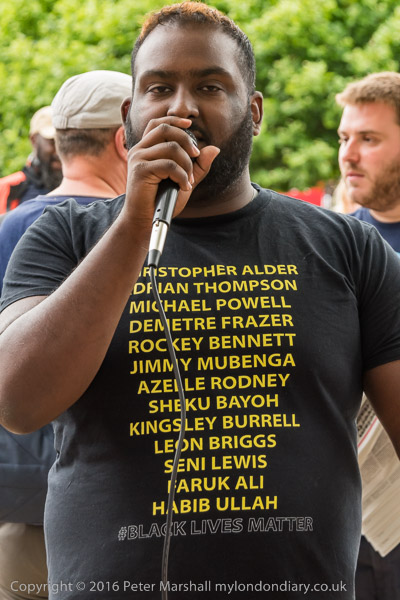
Police, here and in the USA, don’t just kill black people, but the victims of police killings are certainly disproportionately black, and Brixton has history of such events, including the deaths of Ricky Bishop, Sean Rigg and Olaseni Lewis. The situation is clearly even worse in the USA than here largely because all police carry guns, but at the annual commemoration of the lives of those killed in custody in London a list of several thousand who have died in suspicious circumstances is carried at the front of the procession down Whitehall.
One poster in particular – I think from a US source – had a message worth quoting in full:
“Yes, ALL Lives Matter. But we’re focused on the Black Ones right now OK? – Because it is very apparent that our judicial system doesn’t know that. Plus if you can see why we’re exclaiming #BLACKLIVESMATTER you are part of the problem.”
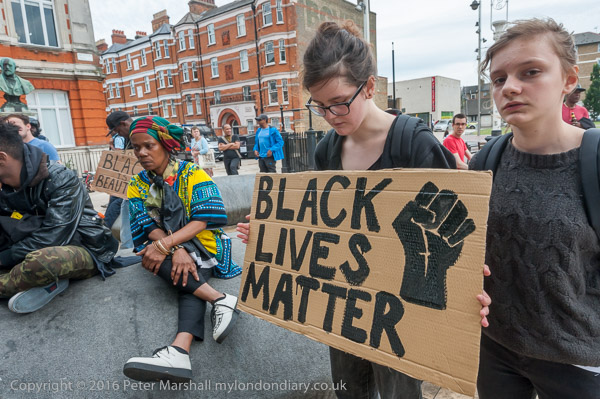
Speaker after speaker, all I think black, though there were a significant number of white supporters in the crowd – mainly at the back, wanted to have their say, and the rally went on much longer than had been planned. So long that I was unable to stay for the march, which later I was told went to Brixton Police Station, where several young black men have died over the years in suspicious circumstances, blocking the road and bringing traffic on the busy road through Brixton to a stop for several hours.
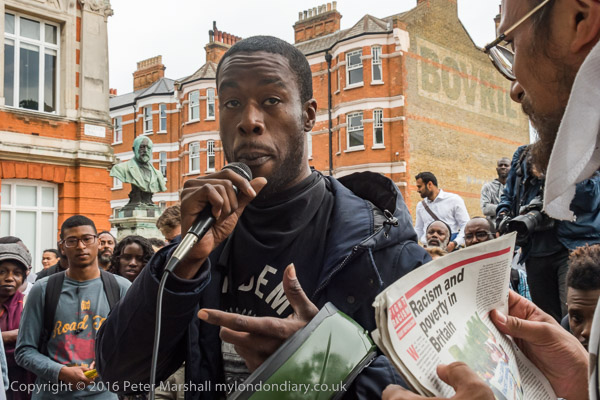
Brixton stands with Black victims
______________________________________________________
There are no adverts on this site and it receives no sponsorship, and I like to keep it that way. But it does take a considerable amount of my time and thought, and if you enjoy reading it, a small donation – perhaps the cost of a beer – would be appreciated.
My London Diary : Buildings of London : River Lea/Lee Valley : London’s Industrial Heritage
All photographs on this and my other sites, unless otherwise stated, are taken by and copyright of Peter Marshall, and are available for reproduction or can be bought as prints.
To order prints or reproduce images
________________________________________________________